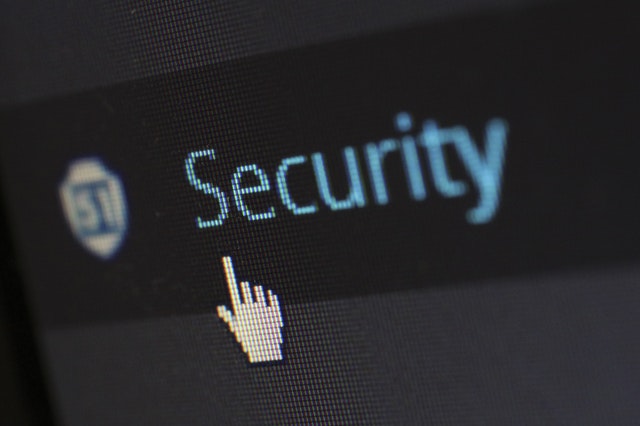
By The Risk Team at Glatfelter Religious Practice
As a church leader, how can I protect my organization from a cyberattack?
If you’ve ever found yourself asking this question, you’re not alone. Church leaders across the United States are working to improve their IT infrastructure, and for good reason. While there is the threat of a data breach for industries across the board, churches have been targeted by hackers for years now. To protect your system against all hacks from phishing attacks leading to computers plagued with viruses to malware attacks seizing hard drives, it’s time to upgrade your cyber security efforts.
In 2011, the Diocese of Des Moines, Iowa raised $680,000 to help the homeless and abused women in their community. But CBS News reported that in just moments, it was all gone. Their accounts were taken over by hackers and the money was stolen.
To understand the risks you face, it’s important to understand the dark side of the digital world.
You may not have had a need for this knowledge in the past, but now it’s an important aspect of protecting your data.
Wait… what is Darkode? This cybercrime forum and marketplace began sometime before 2008. With the purpose of facilitating the sale or trade of hacking services, botnets, malware and more, Darkode quickly became an infamous aspect of the web. In a combined effort by the FBI, Germany, the U.K., Bosnia, Serbia, Romania, India, Sweden, Denmark and Colombia, Darkode was brought down, leading to arrests in 20 countries.
96% of the online world is a dangerous space called the “Dark Web.” The Dark Web —the breeding ground for cybercrime — is thriving, and it has made Dark0de the least of our worries. Cybercrime tactics traded and sold on the Dark Web are becoming increasingly advanced, providing a serious threat to anyone with a computer, internet access and an email address. The available products range from hacking software to illicit drugs and counterfeit money.
Cybercrime has very real costs for anyone who falls victim. Worldwide cybercrime costs an estimated $600 billion per year, and these costs are only expected to rise. Not only can cybercrime hurt your technology, but it can have a hefty impact on your bottom line. You obtain important information from members of your congregation, as well as guests, and their data needs to be protected. A data breach can seriously impact the mission of your church and result in a huge financial loss.
You can help protect your organization from these cyber risks with five simple steps.
1. Start with your passwords
Do you commit these sins of password creation?
- Using the same passwords across computers and accounts
- Not updating passwords on a frequent basis
- Sharing your password with members of your team
- Using passwords or dates that relate to your life
If you do any of these things — stop now! These habits may make life easier, but they also make it easier to hack your accounts.
Create smarter passwords. Don’t fall victim to cybercrime because you’re using weak, predictable ones. You might be thinking, “okay, I’ve heard this before,” but this tip is vital – many people still aren’t following this basic rule. IT professionals recommend using a mnemonic device to create your passwords, crafted from a memorable sentence. Changing your passwords often and adding special characters are also great ways to add protection.
2. Keep your software up-to-date
Software updates may seem like an inconvenience, but they are designed for your protection. When you see a new update, make sure to install it as soon as possible. Like cyber threats, your software is constantly evolving. Don’t forget to renew your subscription with your security software provider each year as well.
3. Be cautious with your clicks
Pop-ups, links and email attachments are not your friends. Always hover over links before you click, and make sure you know where the link will take you. When you hover, be cautious and double-check that there are not any minor differences in the link that appears and the one you’re trying to get to. Sometimes, the only difference between a real website and a fake one is one single letter. If you’re suspicious of the link, or the sender, it’s best not to click altogether. It’s a long read, but we recommend KnowBe4’s excellent guide for what kinds of schemes to be aware of and how to stick to safe clicks.
4. Guard your information
It may seem like a great idea to store your passwords in an organized spreadsheet, but that is not a good way to go. If your computer is compromised, all of your accounts are suddenly at risk. Consider saving passwords on an encrypted USB key to add an extra layer of protection.
5. Hire pros to help keep your church safe
While there are many steps you can take to improve your infrastructure, you may not be able to completely safeguard your church’s information on your own. Consider hiring an IT professional to manage cybersecurity.
Cyber risks are evolving at lightning speed, and it’s in your congregation’s best interest to stay up-to-date on the latest protection efforts. Get ahead of the hackers with these tips so you can stay focused on your mission.
For more safety tips for your church, please visit the Glatfelter blog or Safety Central page.
Glatfelter Religious Practice (GRP) is a leading religious organization insurance provider for all religious denominations, offering coverage for Churches, Synagogues, Mosques, and Temples. GRP’s experienced risk control consultants and specialty underwriters combine extensive insurance and religious risk experience with a service-minded approach to help insure and protect congregations.



Nice informative article, let me share with my team.Thanks alot.